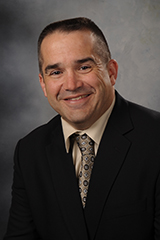February 25, 2020
On the 2020 Civil Rights Training and Reaching Out

I want to thank each of you who participated in the 2020 Civil Rights Training. Whether we are looking at inclusiveness and diversity from the lens of our programming, volunteers, leadership, or hiring and retention practices – we have moral, mission-based, and legal obligations to be inclusive.
A question often asked at inclusiveness, diversity, and civil rights training is, “Isn’t the fact that our programs are open to all enough to be considered inviting and inclusive?” Ask any advertising or marketing executive this, and they would probably just laugh. They know that to appeal to different market segments, you have to appeal to that particular demographic group’s preferences, values, and culture. Simply saying to a group that “You are welcome to buy our product, too” is not enough. Think about it. Just making that statement makes it sound to the message receiver(s) that they are just an afterthought.
When I was an Extension specialist in another system, we would often hear from large dairy farms and pasture-based dairy farms that Extension only served the traditional, medium sized dairy farms. We wanted to say that this wasn’t true, but we really couldn’t. While we wanted to serve all, we did have difficulty in attracting those learner demographics to our programs.
The issue was that these three dairy farm types were distinctly different from each other. They had slightly different values and experiences. They approached dairy farming differently. Their primary production benchmarks used for determining success were different. They did not even share the same language. It was (primarily) English, but the most frequently used terms and phrases were different. If you did not adapt your needs analysis, marketing, programming, and language to their unique cultures – you were not going to see them at your dairy workshops. When you did make a valid attempt to appeal to their values, unique needs, and culture - they knew you truly cared about them. They came and actively engaged in those programs.
While this dairy farm example does not address reaching out to underserved audiences, the underlying model and themes are applicable when looking at people who differ by age, race, ethnicity, religious perspectives and beliefs, sexual preference, gender identity, ect. Get to know the people you want to serve. Let them know and see that you care. Adjusting your needs analyses, marketing, and programming to appeal to different types of learner groups will help reach those we currently underserve. It will enable you to more effectively reach out to the underserved.
Is reaching out to new or underserved audiences easy? No, it is hard work. Is it worth it? You bet! With each effort to be more inclusive we open more eyes to the power of Extension. We enable ourselves to help even more people improve their lives, livelihoods, and communities. Isn’t that what we are all about?